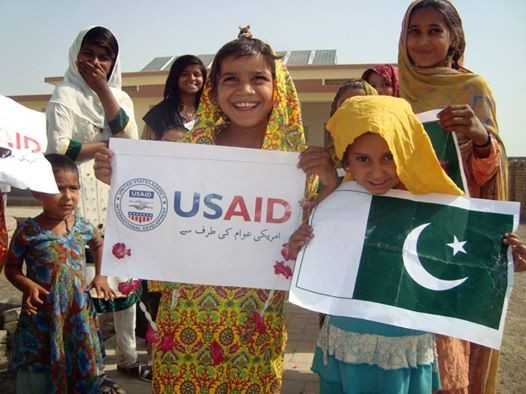
Oct. 2014—Balochistan is an arid province of Pakistan inhabited by nomadic communities, some of which staunchly oppose modern education, especially for girls. In 2010 and 2011, Balochistan, along with the neighboring province of Sindh, was hit by devastating flash floods, severely damaging the little infrastructure for health and education that had been slowly built over the last decade.
The torrential rains and floods left schools partially damaged or completely destroyed. USAID undertook the reconstruction of 36 of the most severely damaged schools in the two provinces from July 2013 to October 2014. Today, most of these schools are operational again and will serve more than 10,300 students. Of these reconstructed schools, 19 are for girls, serving 5,850 students.
In their newly constructed buildings, the children have much to celebrate. Sakina Bibi, a second grade student, is happy to see chairs in her class. “Before this, we used to sit on the floor,” she says. “Some children would bring mats from home. Now I keep telling my mother how good my school looks.” She grins.
All of the rehabilitated schools have been provided with solar-powered electricity, enough to run all academic activities with green energy. Furniture for students and teaching staff has also been provided.
USAID also established parent-teacher management committees at the schools to ensure upkeep of the buildings and for parents to take ownership. This adds to the parents’ appreciation of education for their children and the sustainability of the building.
Shahnawaz, who uses only one name, heads the management committee at a primary school in the Jafferabad district of Balochistan and is thankful that fathers were involved in the process. “This building is for our children, and we will ensure that we keep this school running. It’s a gift for us and our generations to come,” he says. “Many fathers did not feel comfortable sending girls to school which did not have toilets. These new buildings all have toilets and improved water supply and sanitation systems.”
USAID has been running this construction program in Pakistan since the earthquake of 2005 hit the northern region of the country. The program reconstructed 61 schools and 16 basic health facilities after the earthquake. In 2011, the program was expanded to construct 16 buildings for the faculties of education at different universities and rehabilitate the country’s premier institute of education research. Construction of a 60-bed obstetric-gynecological ward in the populous city of Karachi finished in September 2012, and the facility is contributing to provide better health care in the country. A 133-bed hospital in the rural south is currently under construction and scheduled for completion by the end of November 2014.
LINKS
Follow @USAID_Pakistan, on Facebook, on Flickr, on YouTube







Comment
Make a general inquiry or suggest an improvement.